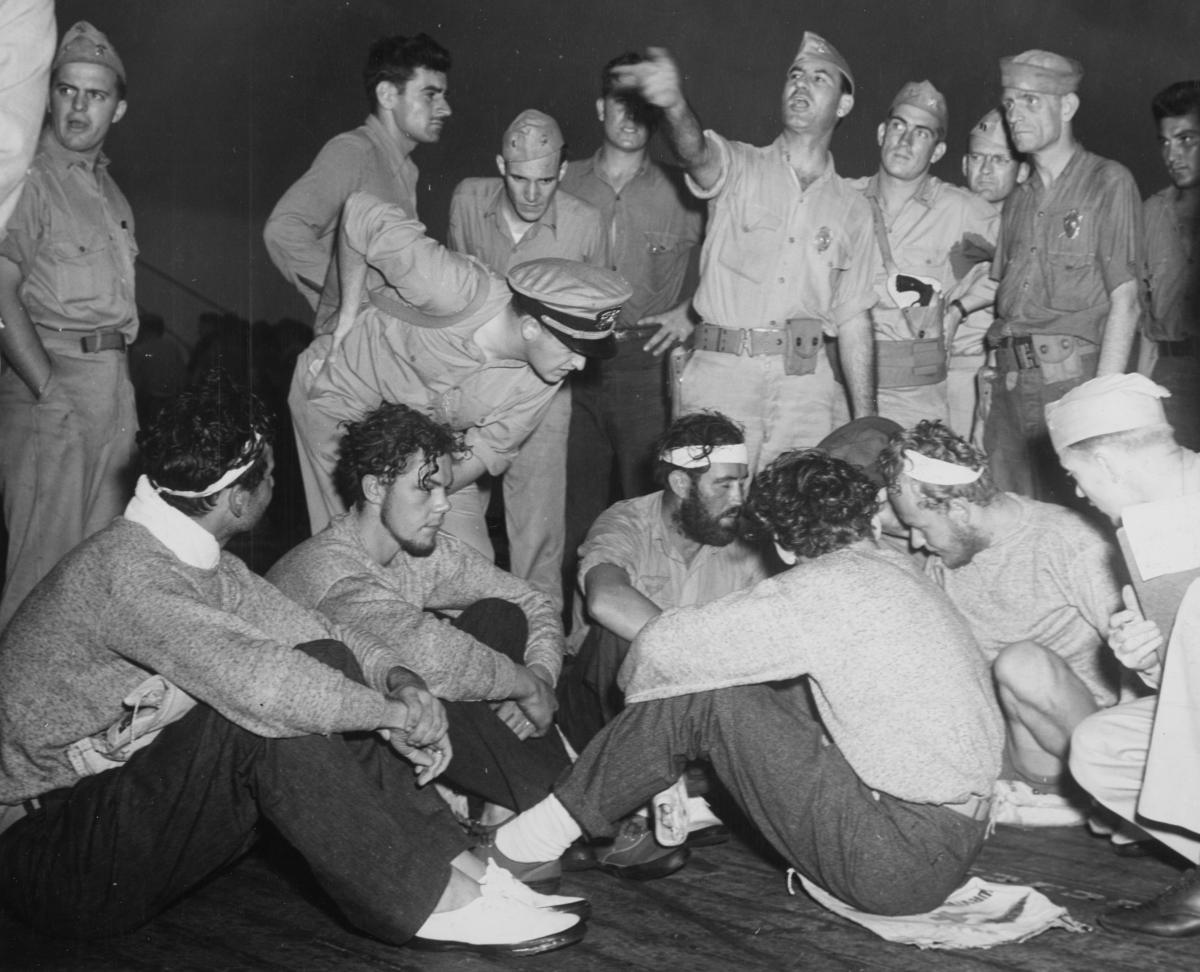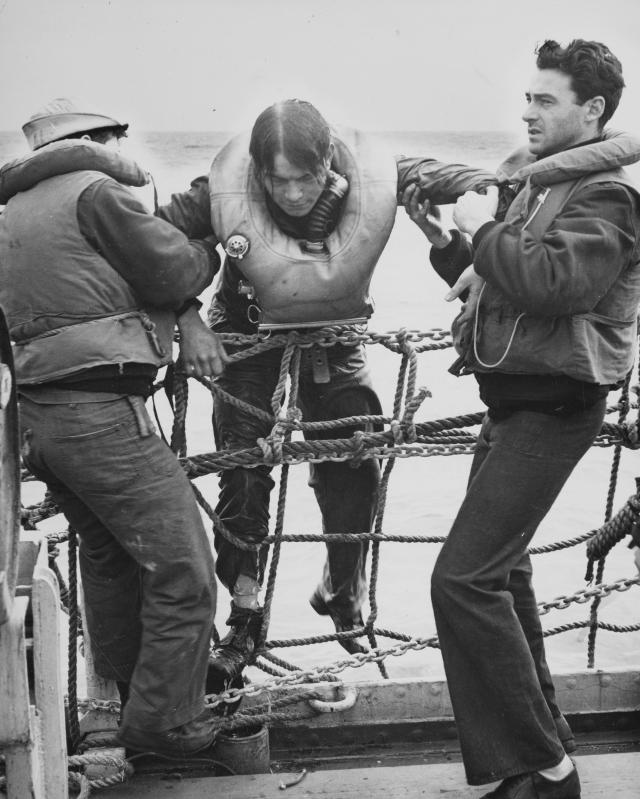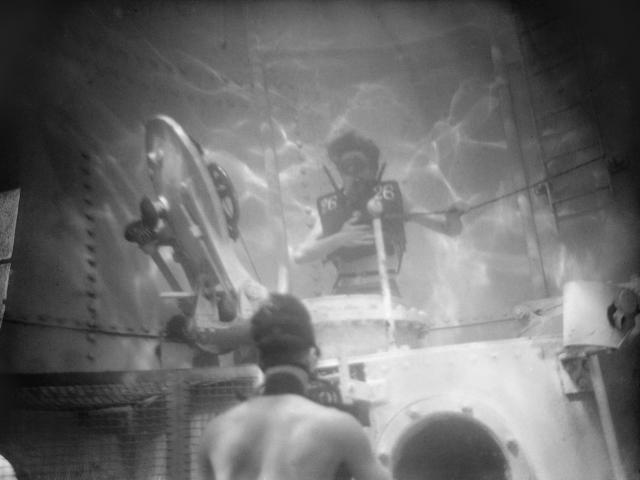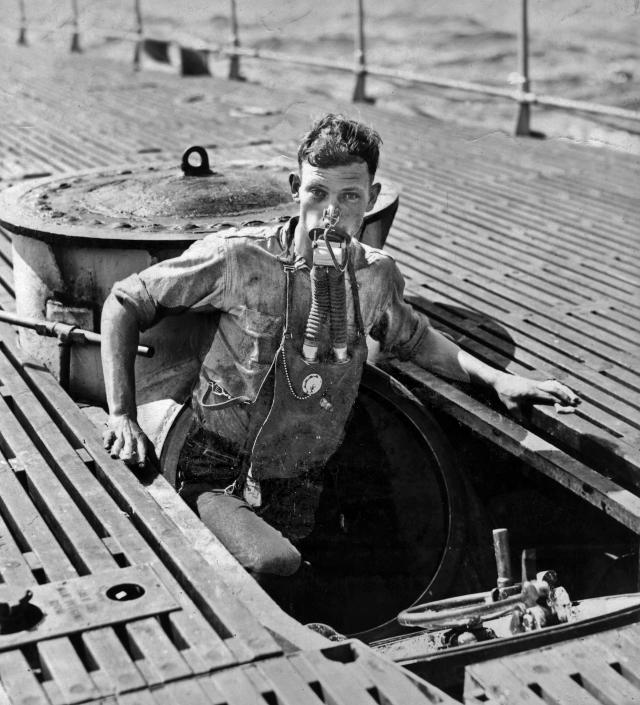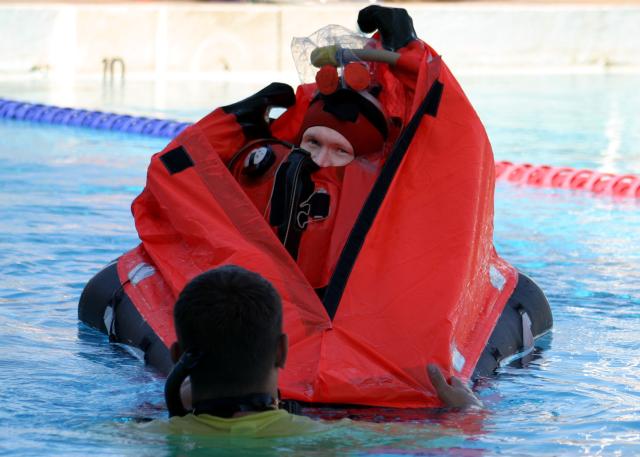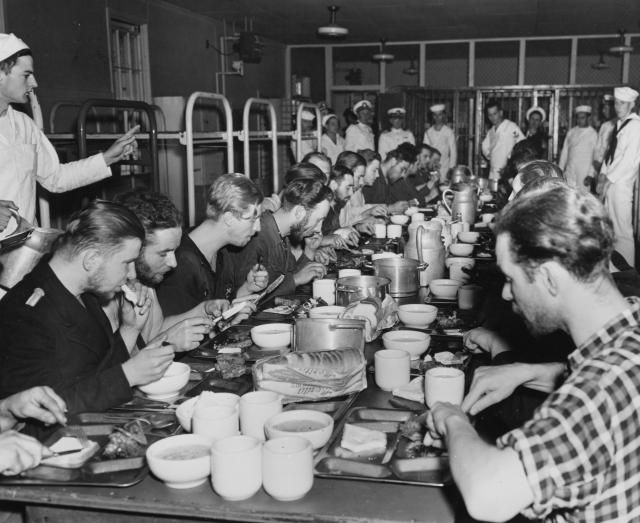When I picture a naval rescue operation, my mind turns to men in life preservers, huddled together in a lifeboat as they watch their vessel sink beneath the waves. At least, that's what I thought of until last week, when a stack of World War II naval rescue images crossed my desk, ready for research and processing. A good number were the images I was expecting: men in lifeboats; men soaked to the skin wearing life preservers; and men bobbing on the surface of the water, ship sinking in the background. Then, at the bottom of the stack, I came to a group of unexpected images: submarine rescues.
Now, it isn't that I thought a submarine sinking was impossible to survive. I had processed several photographs of submarines that were sunk when they were spotted at the surface. What surprised me was that some of these photographs showed submariners surviving after their sub had exploded beneath the waves. It had never occurred to me that a person could survive an event like that, so, of course, I got to wondering how.
The first examples of submarine escape equipment can be linked to Henry Albert Fleuss, who, in 1878, was granted a patent improving on the rebreather, an apparatus that absorbed the carbon dioxide expelled by the user, allowing the air to be recycled. This type of escape set originally was used in undersea construction projects, but the military applications of the invention were clear, especially once submarines became standard members of international fleets.
In 1910, Sir Robert Davis created the Davis Submerged Escape Apparatus (or DSEA), which was inspired by the Fleuss system. After further modifications, it was adopted by the Royal Navy in 1927 as its emergency escape set for submariners. In addition to the CO2 absorber, the DSEA included a buoyancy bag, an emergency buoyancy bag, and a speed-retarding drogue. It was the first rebreather produced in large quantities.
The United States also created a rebreather, which was standard equipment on Porpoise-class and Salmon-class submarines during World War II, called the Momsen Lung. The Momsen Lung eventually would be replaced with the Steinke Hood in 1962. This rebreather – which essentially was a lifejacket with a hood that completely enclosed the head – would remain in use throughout the Cold War. The hood would then be replaced in the U.S. Navy with a full body suit called the Submarine Escape Immersion Equipment (SEIE) suit, which is still in use today by navies throughout the world.
Even with the most recent escape set, escaping a submerged submarine is still a dangerous endeavor, and that danger did not always end when a submariner reached the surface. During World War II, combat often continued on the surface. Submariners also faced the fear of not knowing if friend or foe would rescue them, or if they would be rescued at all. Luckily for Axis survivors picked up by the U.S. Navy, the rules of war meant they would be taken as prisoners. And if they were extra fortunate, they could get a good meal out of the deal as well.



